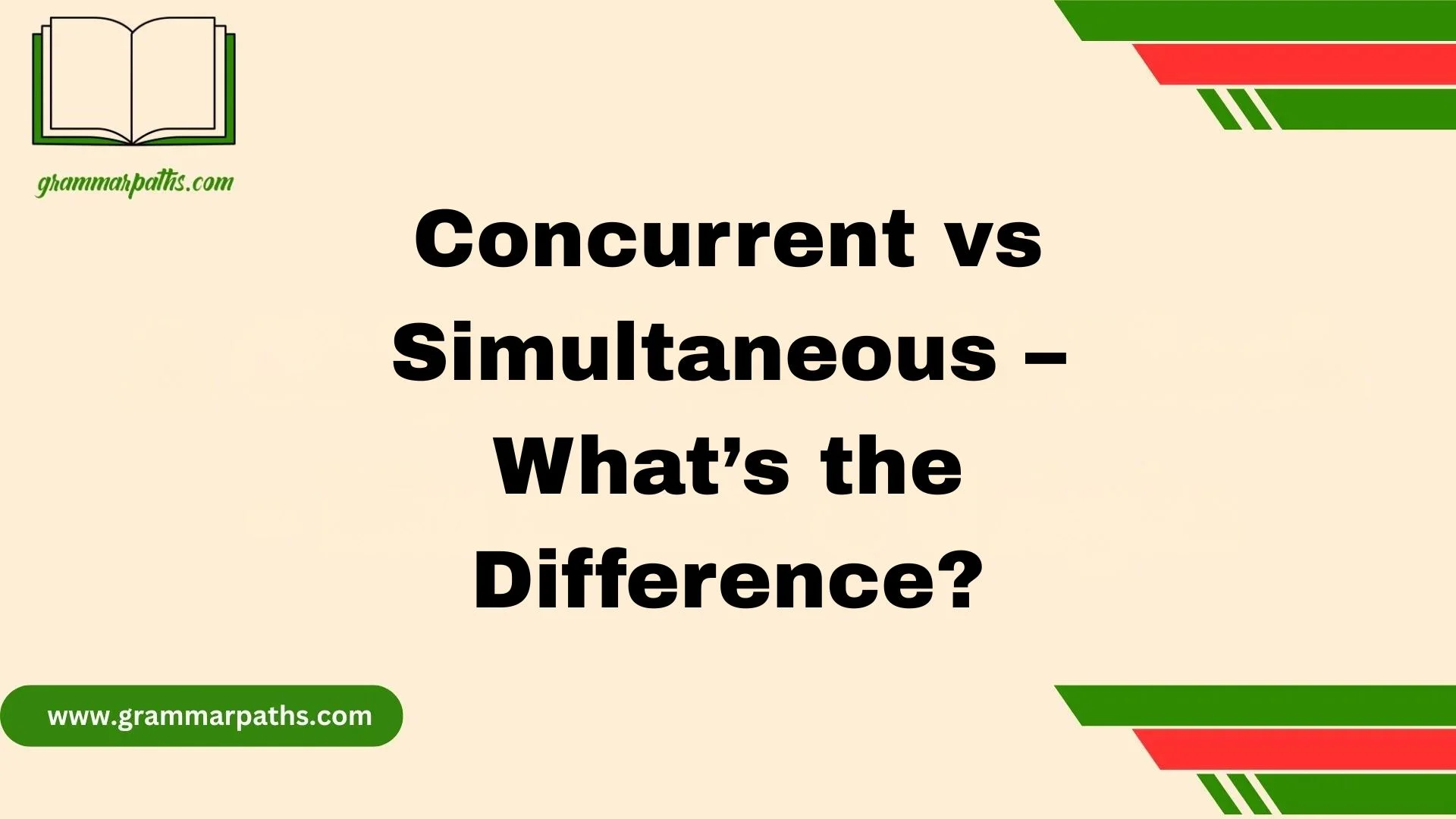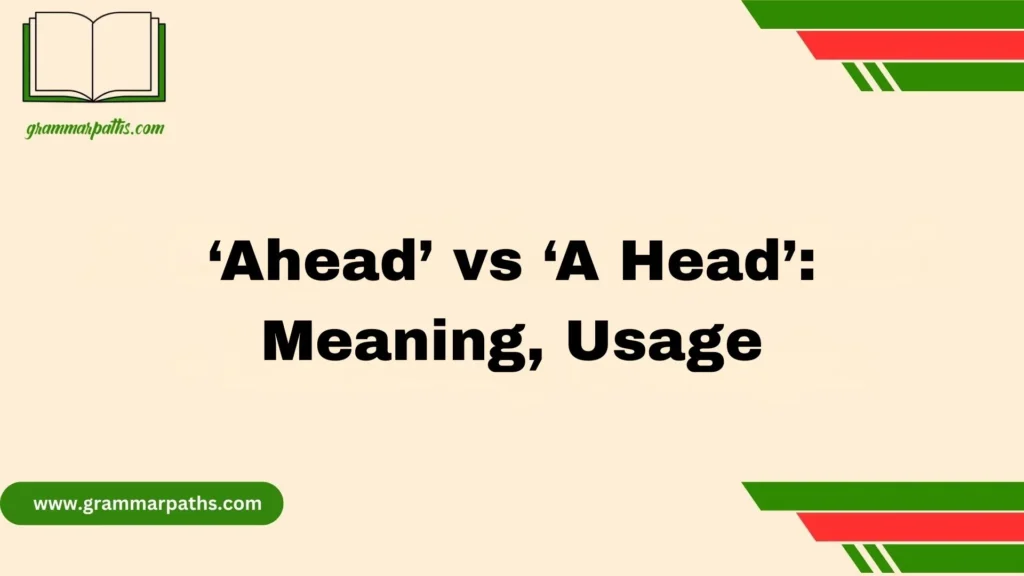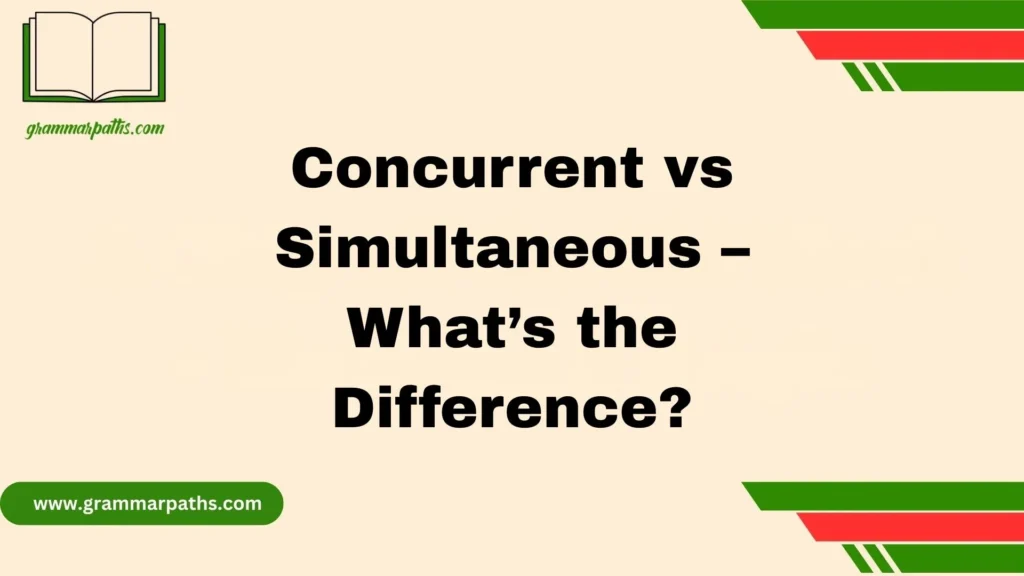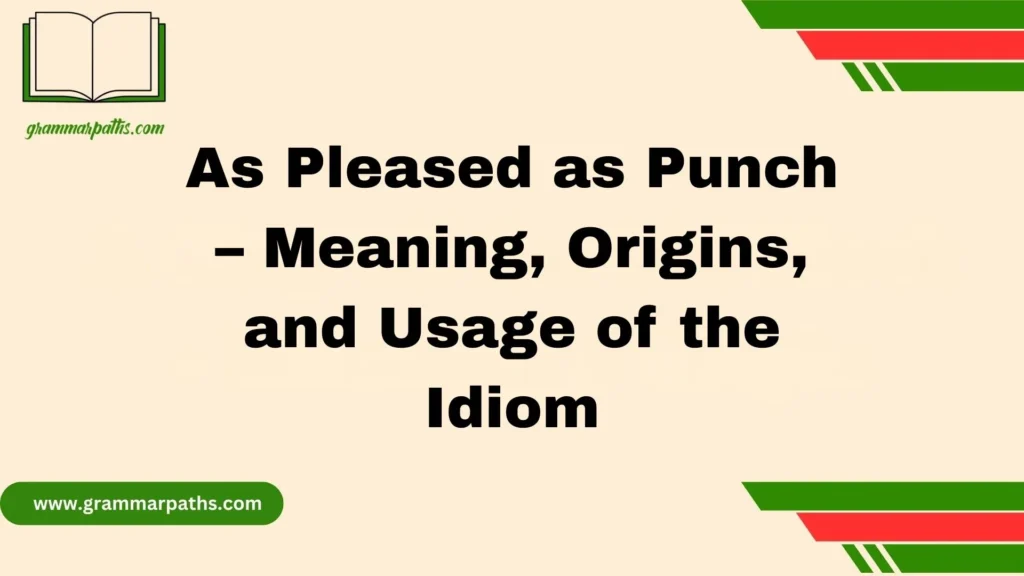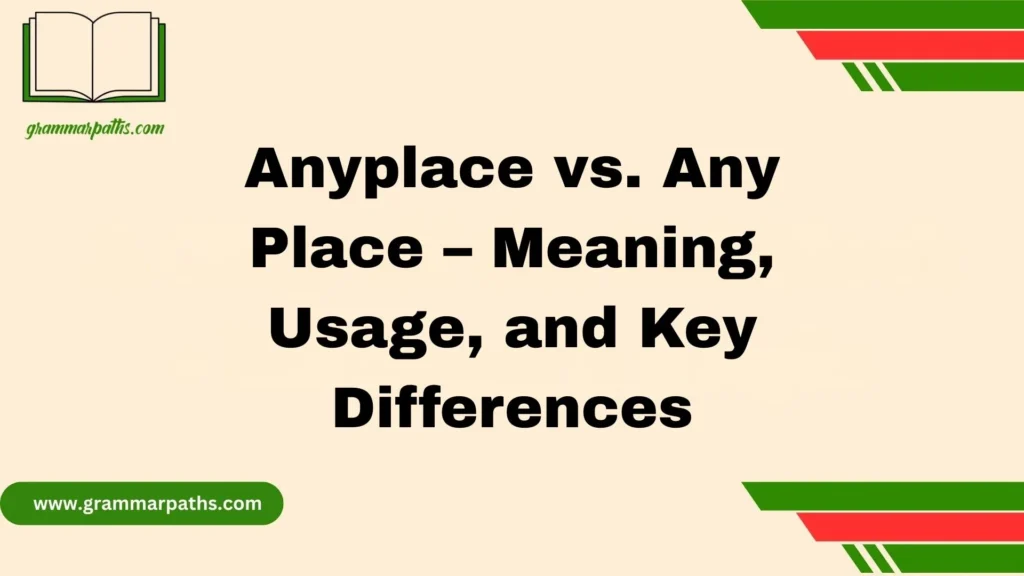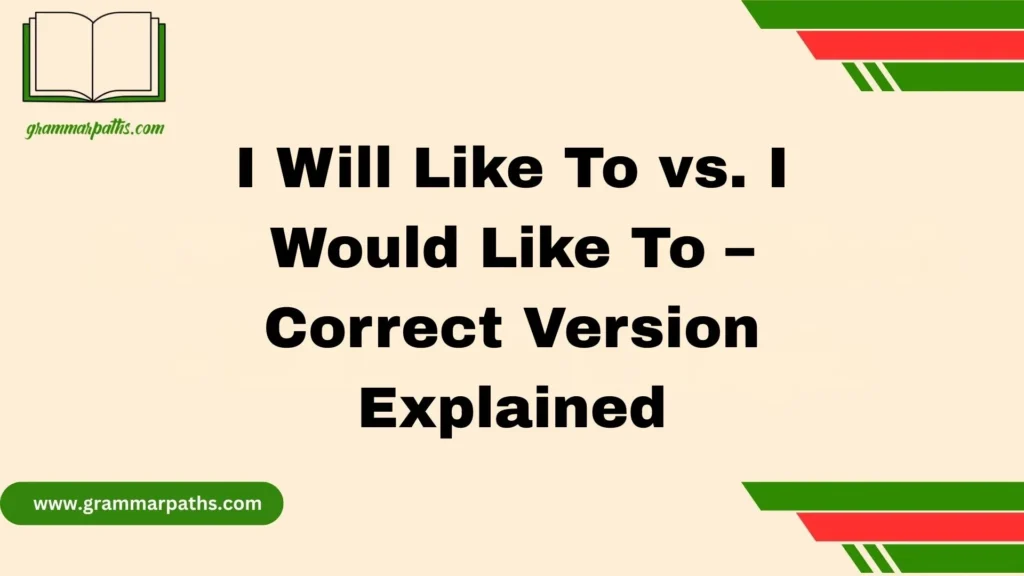When I explain Concurrent vs Simultaneous to students or colleagues, I often describe events and tasks in terms of timing, order, and overlap. While concurrent work can run in parallel with some delay, simultaneous actions require exact alignment and synchronization. This small nuance in definition makes a big difference in communication, whether in everyday chats or professional technical fields, because it shapes the meaning, adds precision, and avoids misunderstanding.
I’ve seen software engineers struggle with workload, system performance, and multitasking when too many users were triggering actions at once, creating heavy load and extra stress on capability. In such situations, the comparison of simultaneousness and concurrency isn’t just theory—it affects operations, execution, and overall efficiency. Using the right term in education, code, or documentation shows expertise, builds a confident and authoritative voice, and demonstrates an intentional, nuanced grasp of language, which is always the smarter choice.
Defining Concurrent and Simultaneous
Words gain strength from clear definitions, so let’s start there.
- Concurrent means events or actions that overlap in time. They may start at different moments, proceed at different speeds, and end independently, but they’re happening within the same time window.
- Simultaneous means events that happen at the exact same instant, perfectly aligned in start, progress, or finish.
Etymology
- Concurrent comes from the Latin concurrere, meaning “to run together.” The image here is of streams flowing side by side.
- Simultaneous comes from the Latin simul, meaning “at the same time.” It emphasizes synchronization and exact alignment.
Key Differences Between Concurrent and Simultaneous
While both describe things happening in relation to time, the nuance lies in timing precision.
Here’s a quick comparison:
| Aspect | Concurrent | Simultaneous |
| Timing | Overlaps but not perfectly aligned | Exact alignment at the same moment |
| Start/End | May start/end differently | Must start/end together |
| Examples | Students studying in the library | Two singers hitting the same note |
| Use in Tech | Overlapping tasks processed by a system | Parallel execution on multiple cores |
| Legal Use | Concurrent sentences served at the same time | Simultaneous actions in court proceedings |
Think of concurrency as lanes of traffic moving side by side, while simultaneity is cars crossing the finish line together.
Everyday Usage and Examples
To really lock this in, let’s explore some relatable examples.
- Concurrent actions:
- Watching TV while cooking dinner
- A teacher grading papers while students take an exam
- Different athletes training in the same gym at once
- Simultaneous actions:
- A crowd clapping at the exact moment a performer takes a bow
- Lightning and thunder striking in sync (rare, but dramatic when it happens)
- Fireworks exploding at the same instant in a choreographed show
Analogy
Imagine a relay race. When runners overlap during the handoff, they’re running concurrently. But when two runners leap off the starting line at the exact millisecond, that’s simultaneous.
Technical and Scientific Contexts
In fields like technology, law, and science, the stakes are higher—precision isn’t optional.
In Computing
- Concurrent processing: A single CPU handles multiple tasks by rapidly switching between them. The tasks overlap in execution but not necessarily at the same instant.
- Simultaneous processing: Multiple CPUs or cores execute tasks literally at the same time. This is true parallelism.
Example:
- When you stream music while browsing the web, those processes are concurrent.
- When two cores run two mathematical calculations in perfect sync, that’s simultaneous.
In Law
- Concurrent sentences: A person convicted of multiple crimes may serve all sentences at the same time.
- Consecutive sentences: The opposite of concurrent; sentences stack one after another.
- Simultaneous actions in legal terms often describe events in testimony, like two witnesses observing an act at the same moment.
In Science & Medicine
- Concurrent trials: Two or more medical studies running in overlapping timelines.
- Simultaneous measurements: Recording heart rate and blood pressure at the exact same instant.
Concurrent vs Simultaneous Users in Technology
One of the most important areas where these terms diverge is in performance testing and software engineering.
- Concurrent users: Multiple users connected to a system in overlapping time periods, though they may not all click or type at the same moment. Example: 10,000 users logged into an e-learning platform throughout an exam day.
- Simultaneous users: Users performing actions at the exact same second. Example: thousands of fans refreshing ticketing sites at the exact moment sales open.
Why This Matters in Testing
- A website must scale to support concurrent load (many users logged in).
- It must also withstand simultaneous spikes (everyone pressing “buy” in one second).
Case Study:
When Taylor Swift’s concert tickets went on sale, millions of users tried to purchase tickets at the same moment. The system wasn’t just dealing with concurrent users—it was overwhelmed by simultaneous actions, causing crashes.
Language and Usage Insights
Language evolves, and both words have traveled far.
Frequency Trends
Data from the Google Ngram Viewer shows:
- Concurrent has historically appeared more in legal and technical texts.
- Simultaneous has seen steady usage in scientific and everyday writing.
Modern Usage
- Writers often prefer simultaneous for clarity in everyday communication.
- Concurrent remains dominant in computing, law, and project management.
Common Mistakes and Misconceptions
- Mistake 1: Using simultaneous to describe overlapping but not identical events.
- Wrong: “The two classes are simultaneous.”
- Better: “The two classes are concurrent.”
- Mistake 2: Believing concurrency implies exact alignment.
- It doesn’t. Concurrency is about overlap, not precision.
- Mistake 3: Ignoring context.
- In technology, concurrency vs simultaneity can change the way systems are designed and tested.
Practical Guide: Choosing the Right Word
Here’s a simple way to decide:
- Use concurrent when events overlap.
- Use simultaneous when events happen at the exact same time.
Cheat Sheet
| Scenario | Correct Word | Example Sentence |
| Two classes scheduled at once | Concurrent | “The courses run concurrently this semester.” |
| Fireworks exploding together | Simultaneous | “The fireworks exploded simultaneously.” |
| Multiple threads in computing | Concurrent | “The system supports concurrent processing.” |
| Two witnesses shouting at once | Simultaneous | “The witnesses shouted simultaneously.” |
Conclusion
Understanding the difference between Concurrent vs Simultaneous helps you use the right word in both casual and professional settings. While concurrent actions can overlap without being perfectly aligned, simultaneous actions must start and end at the same moment. Knowing this distinction adds clarity to your communication, strengthens your writing, and makes you sound more precise and confident in any context.
FAQs
Q1: Are concurrent and simultaneous the same thing?
No, they’re not. Concurrent means events happen during the same time frame but may not be perfectly aligned, while simultaneous means events happen at the exact same time.
Q2: Where is the word concurrent used most often?
It’s common in technical fields like software engineering, where multiple users or processes can run at once but not always in perfect synchronization.
Q3: Can I use simultaneous in daily conversation?
Yes. For example, you might say two people spoke simultaneously when they started and ended their sentences at the exact same moment.
Q4: Why is this distinction important in professional writing?
Because it improves clarity and avoids misunderstanding. Using the right term makes your message precise, especially in documentation, instructions, or education.
Q5: Is simultaneousness the same as concurrency?
Not exactly. Simultaneousness refers to exact timing, while concurrency emphasizes shared time frames where tasks may only partially overlap.

Grace Marie is the dedicated writer behind GrammarPaths.com, where she shares her passion for English grammar, idioms, and writing mastery. With a strong background in language studies and years of experience helping learners improve their communication skills, Grace creates clear, practical, and engaging content that makes English easy to understand.
